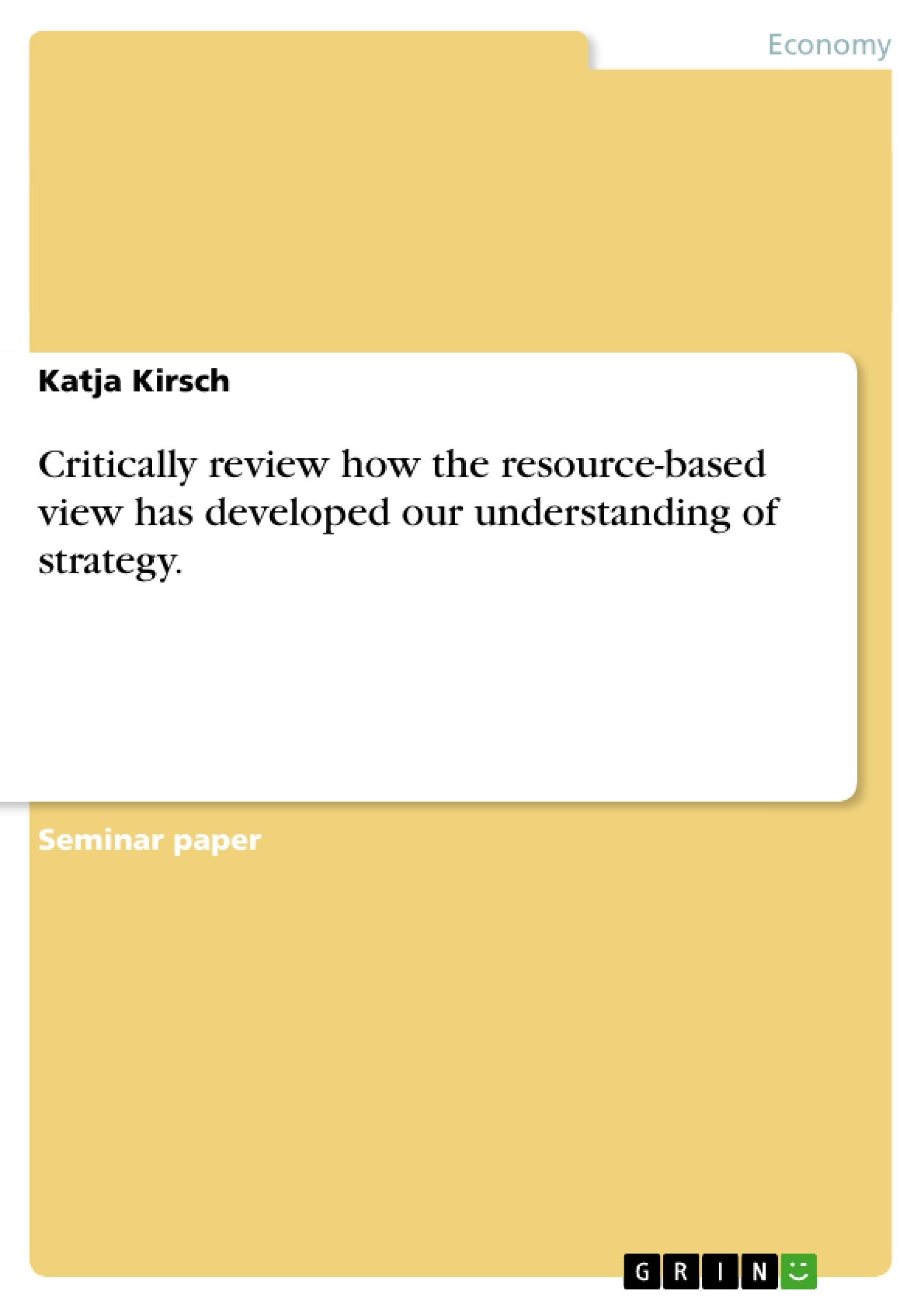There is no common definition of strategy or the way how to implement it. However, it is common understanding that the purpose of each business is to maximise profit and that this is reached through a competitive advantage a firm might have over its rivals. Therefore, strategy should describe a mean to manage and direct a business in its environment towards a favourable market position which offers a competitive advantage (e.g. Rumelt, 1996; Porter, 1996).
In this sense, “a firm is said to have a sustained competitive advantage when it is implementing a value creating strategy not simultaneously being implemented by any current or potential competitors and when these other firms are unable to duplicate the benefits of this strategy.” (Barney, 1991: 102) However, there are different approaches regarding what strategies need to be based upon to achieve that competitive advantage, i.e. what are the sources for a favourable market position and a competitive advantage.
This paper then goes on explaining the resource-based view before listing its criticisms and concluding with an outlook into the future of strategic planning.
Content
1. Introduction page
2. The Resource-based View page
3. Criticisms of the Resource-based View page
4. Conclusions page
5. References page
1. Introduction
There is no common definition of strategy or the way how to implement it. However, it is common understanding that the purpose of each business[1] is to maximise profit and that this is reached through a competitive advantage a firm might have over its rivals. Therefore, strategy should describe a mean to manage and direct a business in its environment towards a favourable market position which offers a competitive advantage (e.g. Rumelt, 1996; Porter, 1996).
In this sense, “a firm is said to have a sustained competitive advantage when it is implementing a value creating strategy not simultaneously being implemented by any current or potential competitors and when these other firms are unable to duplicate the benefits of this strategy.” (Barney, 1991: 102) However, there are different approaches regarding what strategies need to be based upon to achieve that competitive advantage, i.e. what are the sources for a favourable market position and a competitive advantage.
2. The Resource-based View
Although, a resource-based perspective has long been central to strategy researchers (Conner, 1991), the resource-based view (RBV) received a fresh impetus only during the 1980s. It emerged as opponent to the until then prevalent environmental model, or positioning-based view (PBV). Strategists with this classical view regard the external environment as the primary determinant of strategy. That is, strategy is formulated with a view to a as advantageous perceived position in the market. Grant (1991) argues that firms start the formulation of their strategy generally with a mission statement which is usually related to the market or the customers a firm wants to serve. “But in a world where customer preferences are volatile, the identity of customers is changing, and the technologies for serving customer requirements are continually evolving, an externally focused orientation does not provide a secure foundation for formulating long-term strategy. “ (Grant, 1991: 116)
Whereas in positioning models firms are seen as systems “of discrete but interrelated socio-economic activities” (Oosthuizen, 2003: 3) and a strategy should create a fit between a firm’s activities and its environment within an industry, the RBV thinks of the firm as a unique bundle of resources. Firm resources are defined as “all assets, capabilities, organizational processes, firm attributes, information, knowledge, etc. controlled by a firm that enable the firm to conceive of and implement strategies that improve its efficiency and effectiveness” (Barney, 1991: 101). The RBV makes two assumptions:
1) ”… firms within an industry … may be heterogeneous with respect to the
strategic resources they control” (Barney, 1991: 101)
2) “… these resources may not be perfectly mobile across firms, and thus
heterogeneity can be long lasting.” (Barney, 1991: 101)
That means, firms in different industries as well as within one industry differ in their supply with resources and should, to achieve a competitive advantage, exploit those differences. A competitive advantage can be sustained if those resources are valuable, rare, imperfectly imitable, and not substitutable. (Barney 1991) Because strategic resources as reputation, organisational knowledge, and staff motivation for example are not mobile, they can not be bought in factor markets, they can be valuable and hard to imitate. In general the resource-based theory of competitive advantage is about exploiting differences in the resource base of the firms.
The above two assumptions are in contrast with the assumptions of the PBV, where it is assumed that:
1) “…firms within an industry … are identical in terms of the strategically
relevant resources they control and the strategies they pursue. “ (Barney,
1991: 100)
2) “…should resource heterogeneity develop in an industry …, … this
heterogeneity will be very short lived because the resources that firms use
to implement their strategies are highly mobile.” (Barney, 1991: 100)
[...]
[1] Except charity or most governmental organisations.
- Quote paper
- Katja Kirsch (Author), 2004, Critically review how the resource-based view has developed our understanding of strategy., Munich, GRIN Verlag, https://www.grin.com/document/36615
-

-

-

-
Upload your own papers! Earn money and win an iPhone X. -

-
Upload your own papers! Earn money and win an iPhone X. -

-
Upload your own papers! Earn money and win an iPhone X. -

-
Upload your own papers! Earn money and win an iPhone X. -

-
Upload your own papers! Earn money and win an iPhone X.

